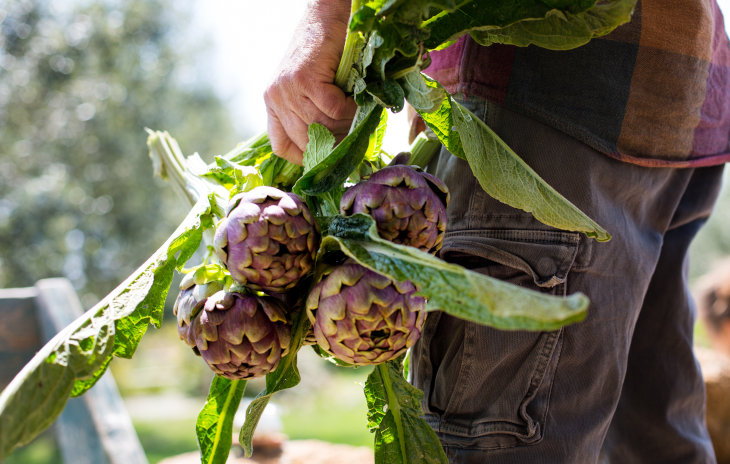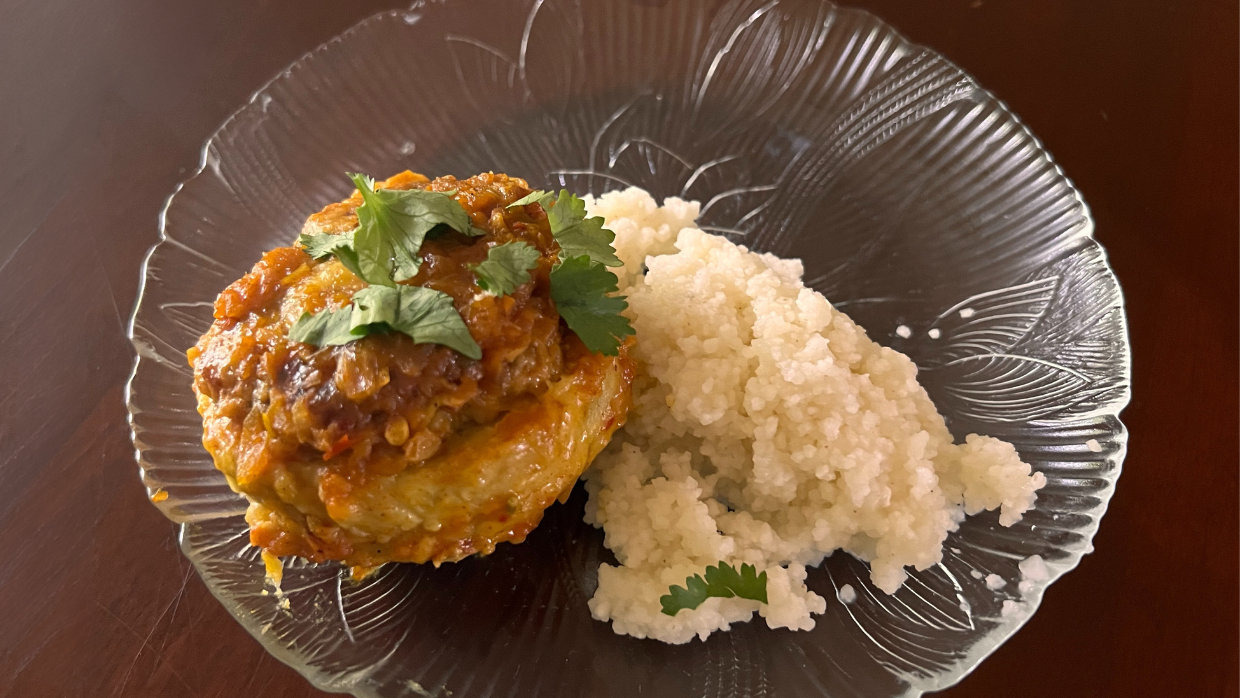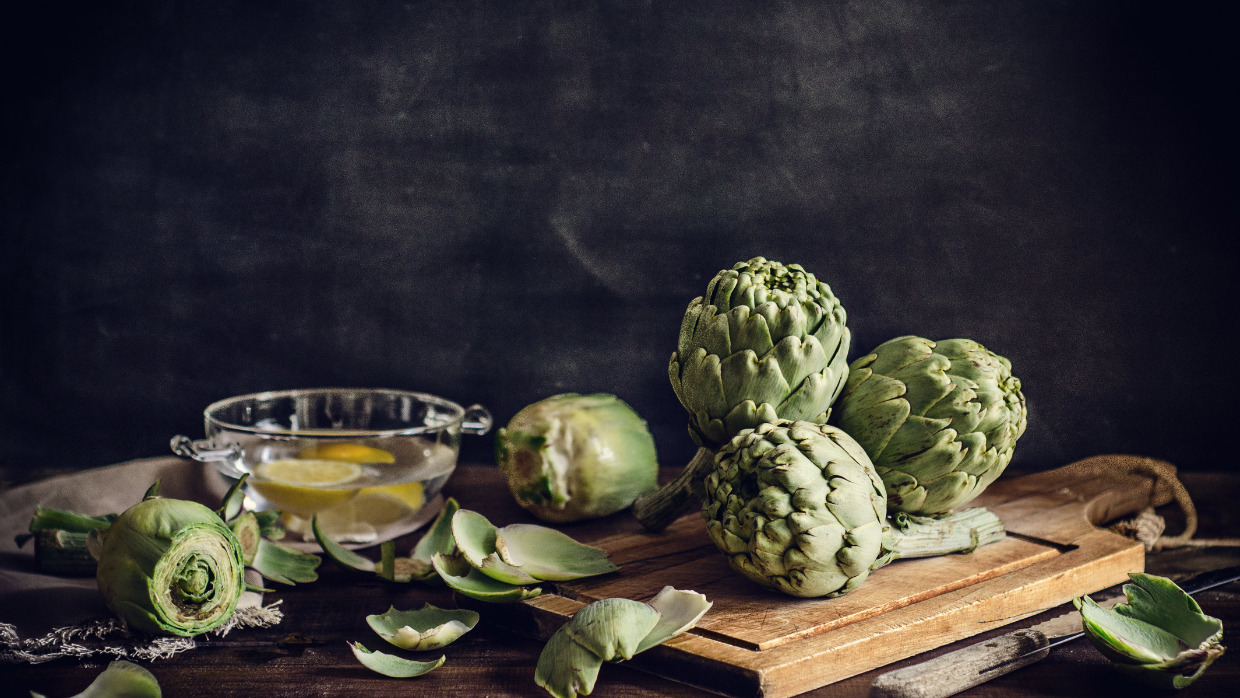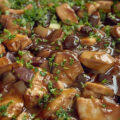When you think of traditional Jewish foods, dishes such as matzah balls or chopped liver might come to mind. What about artichokes? Ever since ancient times, artichokes have been embraced by Jewish cooks. Here are a few facts about the Jewish history of artichokes, as well as a delectable recipe to try.
Was Man’s Punishment for Leaving the Garden of Eden – the Artichoke??
Anyone who’s ever prepared fresh artichokes to eat knows that it’s a lot of work. A variety of thistle, artichokes must first be trimmed of their extremely sharp leaves before they can be eaten – or even handled. Only after extensive trimming can the delectable interior of the artichoke flower – the edible portion of this delicious plant – be eaten.
The ancient rabbis posited that all the hard work that goes into preparing artichokes to eat is no accident: it’s meant to form a stark contrast with how easy life was for our ancient ancestors Adam and Eve when they lived in the Garden of Eden. The story of what went wrong back then is famous. God created the first people – Adam and Eve (Chava in Hebrew) – and placed them in a beautiful garden where they didn’t have to work at all, simply eat the wonderful fruits that grew throughout the beautiful garden. One fruit tree was off-limits however, the Tree of the Knowledge of Good and Evil (Genesis 2:17), and of course this is the very tree that Adam and Eve couldn’t help themselves from sampling. As a result they were kicked out of the Garden of Eden, and God promised to make life in the real world much more difficult for them. Instead of being given delicious fruit, suddenly Adam had to grow it with great difficulty out of the rocky ground: “Thorns and thistles shall it (the ground) sprout for you” (Genesis 2:18).

In Jewish tradition, these thistles were none other than artichokes. The curse wasn’t that Adam wouldn’t be able to grow food at all; it was simply that he would only grow difficult, labor-intensive foods like the artichoke (Genesis Rabbah 2:18).
Ancient Delight
Artichokes are native to the Mediterranean region, and grew wild throughout the Land of Israel. They were a popular food in ancient times; the Talmud mentions them several times. The great 2nd Century sage Rabbi Shimon bar Yochai, for instance, talked about gathering “wild artichokes,” a presumably common activity (Mishnah Oktzin 3:2). The name for artichokes in the Talmud is kinras, which later evolved into the Latin name for the genus artichoke today: cynara.
Jews in Ancient Rome
Ancient Rome was home to a thriving Jewish community. By some estimates, fully 10% of the Roman Empire was Jewish at the time of Emperor Augustus. The Emperor Titus alone brought 50,000 Jewish slaves from the Land of Israel back to Rome. It seems these Jewish captives brought their love of artichokes with them. For centuries in Italy, artichokes were considered a “Jewish vegetable,” eschewed by the wider community.

Jewish food historian Edda Servi Machin describes a special way that ancient Roman Jews used to clean artichokes, then fry them for the dish that became known as “Jewish Artichokes,” or Carciofi alla Giudi, a deep-fried and seasoned whole artichoke, which is one of Italy’s most beloved foods today. (See The Classic Cuisine of the Italian Jews, Vol. I: Traditional Recipes and Menus and a Memoir of a Vanished Way of Life by Edda Servi Machlin, Giro Press: 1981.)
The “Jewish Vegetable”
For Italian Jews, artichokes became a major staple, served any number of ways. On Passover, which coincides with peak artichoke season in Italy, they were especially important: Jewish cooks fried them in oil, baked them with herbs, stewed them with lemons, and even stuffed them with meatballs.
Two Medieval Passover Haggadahs from Italy even depict families using artichokes as their maror (bitter vegetable) on the Seder plate, so ubiquitous was this popular food.
Bringing Artichokes to Spain
Jews weren’t the only people to appreciate artichokes’ delicate taste. In the Middle Ages, Muslim Arabs began experimenting with growing new, improved varieties of artichokes, resulting in even tastier, less prickly varieties. This is when artichokes began to get their modern name, al-kharshuf, literally “thorns from the ground.” (This later evolved, particularly in French-speaking lands, to artichaut.)
Arab traders brought artichokes to Medieval Spain, and Spanish Jews enthusiastically adopted them, creating their own artichoke-themed dishes. When Jews were expelled from Spain in 1492, they took their love of artichokes with them.
Sephardic Jews - Jews with family roots in Spain - spread Spanish-Jewish artichoke dishes north to Jewish communities in Italy, and south into Egypt and other North African countries. One favorite was a lemon-flavored stew of artichokes and fava beans, garnished with mint and dill. Food historian Claudia Rodin, who grew up in a Jewish quarter of Cairo, recalls food vendors bringing large boxes of artichokes to the doors of Jewish houses, offering to sell them “by the crateful”. (See The Book of Jewish Food: An Odyssey from Samarkand to New York by Claudia Roden; Alfred A. Knopf, Inc.: 1996.)
“Jerusalem Artichokes:” unrelated to Jerusalem, unrelated to artichokes.

There are numerous varieties of artichokes: in general, Italian artichokes tend to be more tender than popular American varieties. There is one type of “artichoke,” however, which has nothing to do with artichokes: “Jerusalem artichokes,” which are neither connected to Jerusalem nor are members of the artichoke family.
Native to North America, Jerusalem artichokes grow in woods, near ponds and lakes, and in prairies, and are distinctive for their dazzling sunflower heads. (What is sold in supermarkets as Jerusalem artichokes is the root-like tubers of the flowering plant.) It’s likely that the name Jerusalem is a corruption of the Italian word for sunflower, girasole. Jerusalem artichokes do have a mild flavor that’s not dissimilar to artichokes, and are delicious sauteed with olive oil and lemon, as artichokes are often prepared.
Now here’s that recipe I promised…
Artichoke-Stuffed Chicken Meatballs

Here’s a modern-day, healthy take on a traditional Sephardi dish that has long been popular in Jewish communities in Jerusalem and North Africa: artichoke-stuffed meatballs. They’re filled with veggies and use lean chicken meat to keep things healthy.


















A good recipe and a fascinating article. Thank you. BTW Itnis Genesis 3:18